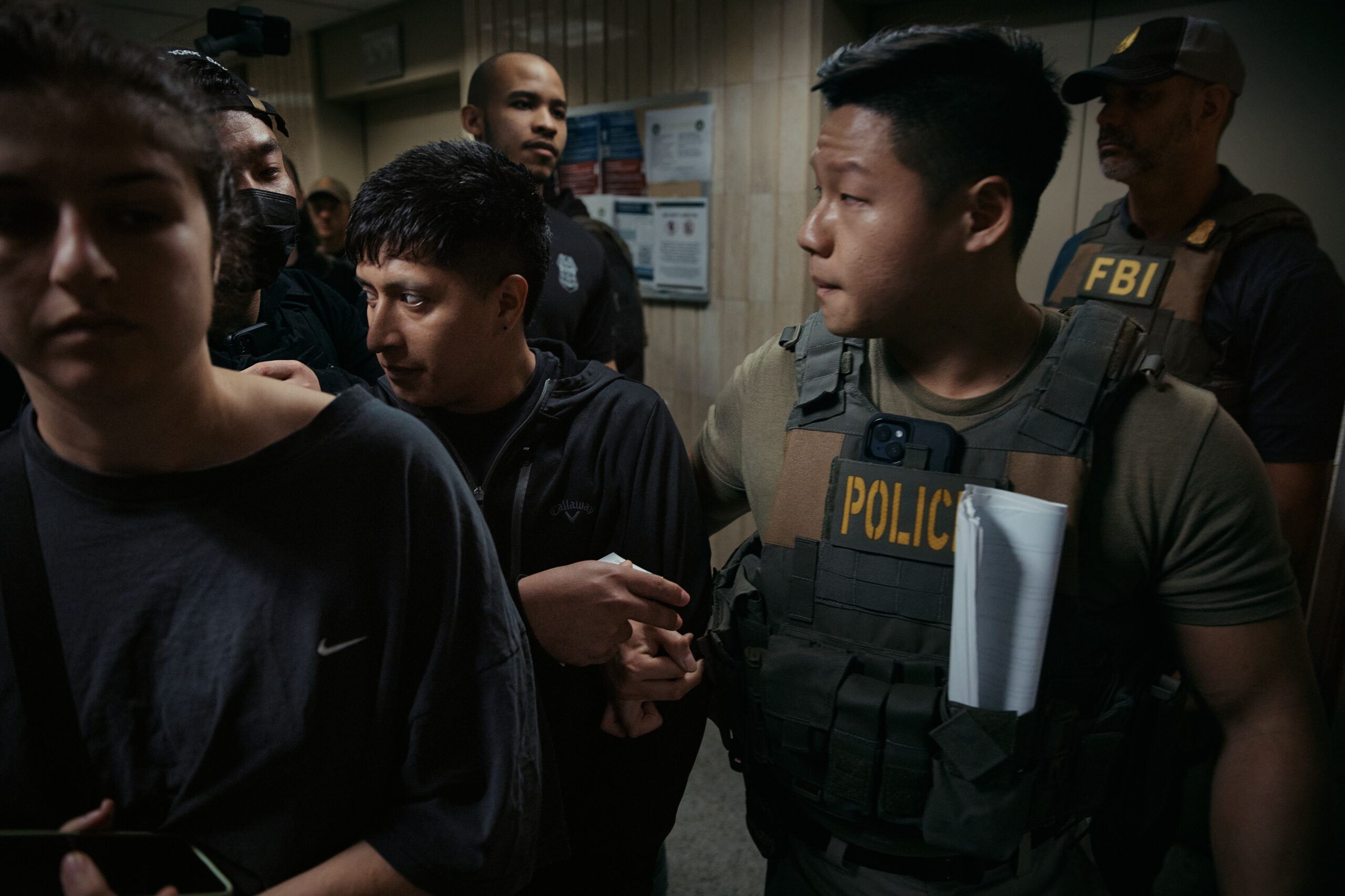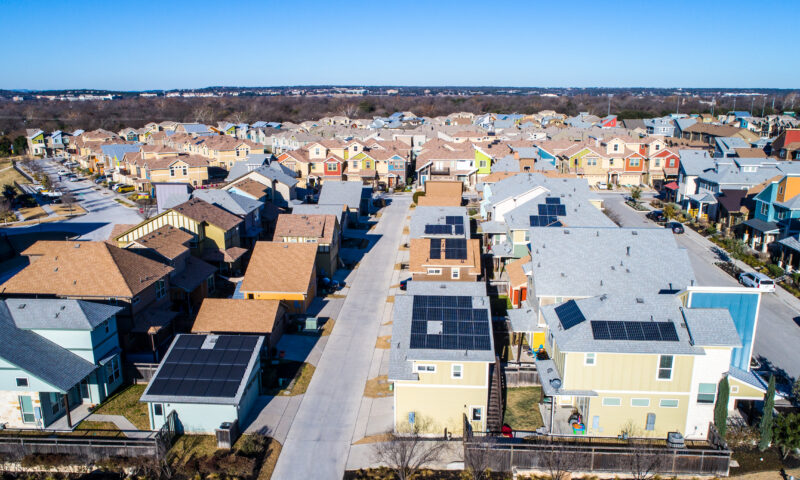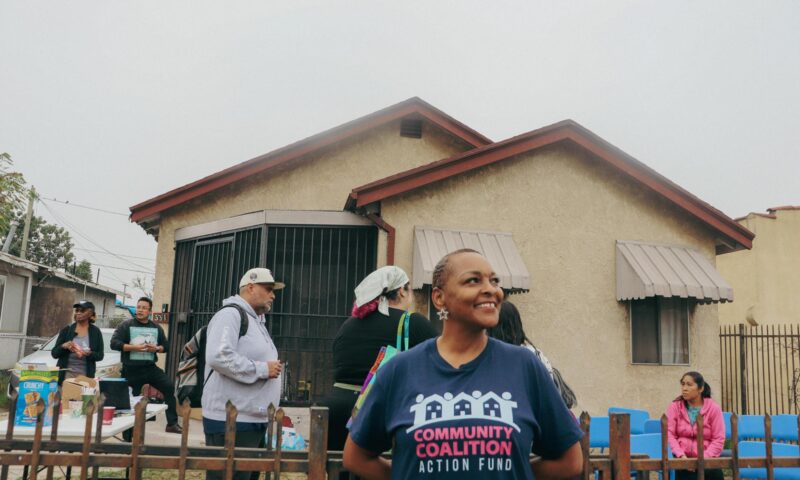Beyond the Border brings you human stories about the U.S. immigration system through original reporting from journalist Kate Morrissey and curated highlights from reporters across the country. The newsletter is supported by Capital & Main.
In a video that recently made its way onto social media, Immigration and Customs Enforcement officers arrest a man from Afghanistan in the hallway of the San Diego Immigration Court as he calmly repeats that he worked with the U.S. military as an interpreter.
“I have all the documents,” Sayed Naser says, as two officers put him in handcuffs.
Through his attorney Brian McGoldrick, Sayed Naser asked not to be fully identified over concerns for his family’s safety.
The officers walk Sayed Naser down the hallway, ignoring requests from the man’s attorney and community advocates to see the warrant before they take him into the elevator down to the ICE offices and holding cells.
“For more than three years, I worked with the U.S. military back in my home country,” Sayed Naser continues, his voice never breaking its calm tone. “I came here to make a better life. I didn’t know that it was going to happen like this for me. I never thought about this. I have all the evidence.”
His is one of a growing number of cases of people seeking protection from potentially life-and-death situations in their home countries who have been arrested when they show up for court hearings to make those asylum requests.
“It’s so terrifying to go to court because you have no idea if you’ve been selected today,” McGoldrick said. “It’s like playing Russian roulette.”
ICE, in an emailed statement attributed to an unnamed spokesperson, said that the agency believes all of the people arrested should have been placed in expedited removal to begin with when they entered the country during the Biden administration.
“Immigration courthouse arrests are just another example of a dragnet approach to enforcement that has gone completely off the rails,” said Sirine Shebaya, executive director of the National Immigration Project. “It looks and feels like kidnapping.”
When the arrests began, attorneys representing ICE in court hearings would ask immigration judges to dismiss the cases before them. In the past, that often meant that the government would no longer actively seek deportation in those cases. However, in this ongoing operation, ICE officers immediately arrest the people leaving their hearings and put them into expedited removal — a faster way to deport someone without a judge’s order.
As word spread about the dismissals, people have fought to keep their cases open, but in many instances, ICE has arrested them anyway.
Several cities besides San Diego have seen similar arrests, including Los Angeles, New York, Chicago and San Francisco. Shebaya estimated that, nationwide, at least several hundred people have been arrested after their hearings.
Benjamin Remy, senior staff attorney at New York Legal Assistance Group, said that ICE officers have entered New York courtrooms to make arrests instead of waiting in the hallways.
“We had ICE officers that violently tackled an individual in front of the immigration judge,” Remy said. “That is the level of violence that we’re seeing on the ground.”
Volunteers in San Diego have filmed ICE officers going into the women’s bathroom at the court to make an arrest as well as taking a woman away from her pregnant sister, who cried inconsolably because she was now left alone in a country she did not know. They said they’ve also seen ICE officers go into at least one courtroom.
Luis, a former lawyer from a Latin American country who asked not to be fully identified due to safety and retaliation concerns, said he thinks ICE is detaining people who are easy to find to increase its arrests. The agency has a quota of 3,000 per day.
“I thought the United States wasn’t like Latin American countries where there’s a lot of corruption,” Luis said in Spanish in a call from Otay Mesa Detention Center. “I thought the processes here were more organized, that they respected the processes. But now I see that they don’t respect the processes just the same. It’s just about numbers.”
Luis said he told the judge he was concerned about the officers in the hallway detaining him when he went to his court hearing in downtown San Diego. The judge kept his case open. Luis had already submitted an asylum application, and all he needed to get through was the hearing where he would tell his story and present his evidence for asylum.
He said his father had been disappeared when he was a child, and after he faced threats himself, he fled so that his own son would not know that same pain.
Still, ICE detained him in May in the court hallway and took him to Otay Mesa Detention Center.
“It’s uncomfortable because they transport you as though you were Hannibal Lecter,” Luis said, noting that he was shackled at the wrists, waist and ankles. “One feels like an assassin. What did I do?”
He waited for a bond hearing in front of an immigration judge, getting a rash in the meantime from the detention facility uniform. At Luis’ hearing, the government argued that he had to remain detained mandatorily. His attorney, Tracy Crowley of Immigrant Defenders Law Center, who took his case pro bono the day he was detained, pointed out that the government’s own documents classified him in a way that would allow an immigration judge to set a bond in his case for him to get out of custody.
The judge asked for written briefs on the issue, extending Luis’ time in detention. Sitting back on a courtroom bench, he appeared devastated.
“I want to fight my case, but I don’t want to fight it in these conditions of being locked up because I was present in all my proceedings. I haven’t missed any,” Luis said. “I’m locked up here waiting. It’s complicated. It stresses me out.”
People like Luis who were arrested with cases still open are now continuing their hearings from inside the detention center. People whose cases were dismissed can request a screening about their fear of returning to their home countries.
Michael Hirman, an immigration attorney in San Diego representing a Venezuelan man who was one of the first people detained, said that his client went through a credible fear screening.
The Venezuelan man left his country’s military rather than commit the abuses he said he’d been ordered to do, and the government has hunted him since, Hirman said.
“I would imagine what he’s got waiting for him in Venezuela is a bullet,” Hirman said.
Hirman said his client passed the screening and was eventually put back in immigration court proceedings, starting over the process he was already in — but this time from inside the detention center.
“What a waste of money and time,” Hirman said.
When asked about Hirman’s client’s case, ICE said that the man’s proceedings are ongoing.
McGoldrick said that in the case of his client Sayed Naser, a government attorney argued that his case should be dismissed because the document that initiated his case in court, known as a Notice to Appear, had been “improvidently issued.”
McGoldrick called the government’s argument a ruse.
“If this one is improvident, they’re all improvident,” he said.
The judge kept Sayed Naser’s case open so McGoldrick could respond in writing to the government’s argument, the attorney said. She also set a hearing date for Sayed Naser to present his evidence and finish his case. Then, ICE arrested him.
McGoldrick said Sayed Naser was in shock for days over what happened to him.
“He can’t understand why an ally of the United States has been put in jail,” McGoldrick said. “He can’t fathom why this is happening. He’s disgusted by the conditions. He said to me, ‘I never thought America was a place where they would put you in a room where you have to sleep in the same place that you go to the bathroom.’”
The Afghan man’s wife found out what had happened to him when a video of his arrest went viral, McGoldrick said. She feared that he would be tortured and disappeared — that’s what happens when someone in Afghanistan is detained, McGoldrick said.
Sayed Naser’s brother recently won asylum in Texas, McGoldrick said, and Sayed Naser’s case is just as strong.
Sayed Naser was living in hiding when Taliban members killed his brother at a wedding that his wife was attending, according to a press release about his arrest from #AfghanEvac, an organization that has helped Afghans flee the Taliban if they had previously helped the U.S. military. Sayed Naser escaped Afghanistan, making his way to Brazil and then up the Western Hemisphere, crossing through the notorious Darién Gap.
He crossed into the U.S. with an appointment through the now-defunct CBP One application that the Biden administration used to process asylum seekers at ports of entry, #AfghanEvac said.
Shawn VanDiver, who leads #AfghanEvac, called Sayed Naser’s arrest horrific.
“What I’m getting from inside the government is they’re trying to say he wasn’t vetted because he crossed through CBP One — which is bullshit,” VanDiver said.
Some attorneys have filed habeas corpus petitions to get their clients released after immigration court arrests.
Other Stories to Watch
The Supreme Court on Monday lifted a Boston-based U.S. district court judge’s order that had blocked the Trump administration from deporting people to third countries where they have no affiliation, according to Reuters. That could mean that ICE will go ahead with its deportation of a group of people from several countries to South Sudan. The order paused their removals partway through the journey, and they have been waiting in Djibouti.
ICE released Mahmoud Khalil, a green card holder whom the Trump administration sent to immigration custody because of his involvement with pro-Palestinian protests at Colombia University. Khalil told NPR that missing the birth of his son while he was in ICE custody was the most tragic experience he had had in his life.
The Texas Tribune reported that ICE claimed one of the Venezuelan men that the Trump administration sent to a Salvadoran prison was a gang member because officers found a photo of him standing next to someone else who had tattoos.
ICE deported a Guatemalan father of four living in Florida even though he’s in the process of obtaining a U visa, according to TV outlet WESH. U visas are supposed to allow undocumented people who are victims of crimes to come forward to police without fear of deportation, but because there is an annual cap on how many the U.S. gives out, people who are eligible wait in a years-long backlog.
ICE also deported a pastor’s wife who lived in Florida and who has not been in her home country of Mexico since the ’90s, according to the Tallahassee Democrat. The woman had been issued a stay of removal and was in the process of getting a family-sponsored visa.
The agency is also trying to deport a journalist who has covered its activities in Atlanta, according to the Atlanta Journal-Constitution.
The New York Times reported on additional ICE arrests of U.S. citizens in the Los Angeles area in recent days. It appears that officers were profiling anyone they considered to be Latino.
L.A. TACO continues to cover the protests in Los Angeles closely, particularly on its Instagram account. The outlet reported that the “No Kings” protest in the city was peaceful until authorities escalated with violence. L.A. TACO is also covering ICE arrests in the region closely, including at a taco truck in East L.A.
The Los Angeles Press Club is one of the plaintiffs in a new lawsuit from the American Civil Liberties Union against the Trump administration. The complaint says that the plaintiffs “seek to prevent the Department of Homeland Security from using unnecessary and excessive violence to prevent them from exercising their First Amendment rights to report on, observe, and protest government actions.”
Homeland Security Secretary Kristi Noem announced on Monday a trip to Panama, Costa Rica, Honduras and Guatemala that includes witnessing a deportation flight, visiting a detention center and observing Department of Homeland Security operations in one of the country’s airports, according to a tentative schedule.
You can get the latest immigration news in your inbox by subscribing to Beyond the Border.


 The SlickNovember 14, 2025
The SlickNovember 14, 2025
 Latest NewsNovember 11, 2025
Latest NewsNovember 11, 2025
 The SlickNovember 12, 2025
The SlickNovember 12, 2025
 Column - State of InequalityNovember 13, 2025
Column - State of InequalityNovember 13, 2025
 Latest NewsNovember 19, 2025
Latest NewsNovember 19, 2025
 Latest NewsNovember 18, 2025
Latest NewsNovember 18, 2025
 Latest NewsNovember 17, 2025
Latest NewsNovember 17, 2025
 The SlickNovember 18, 2025
The SlickNovember 18, 2025

